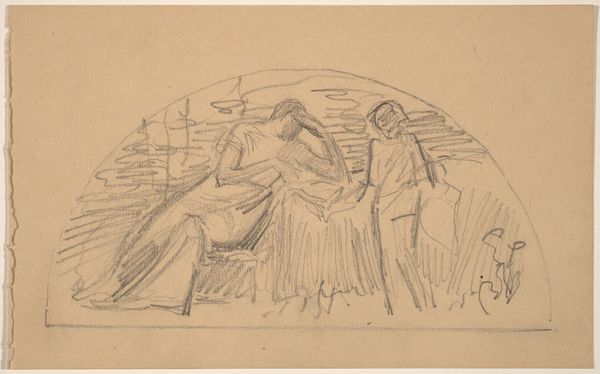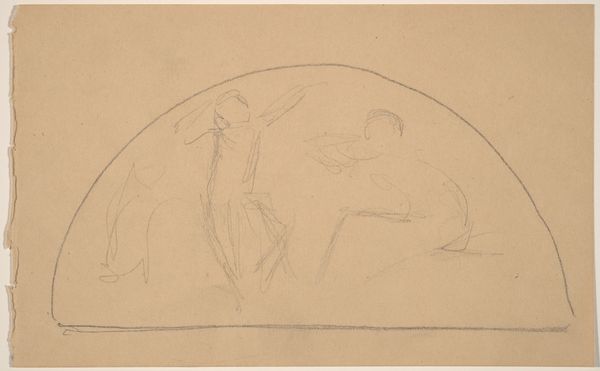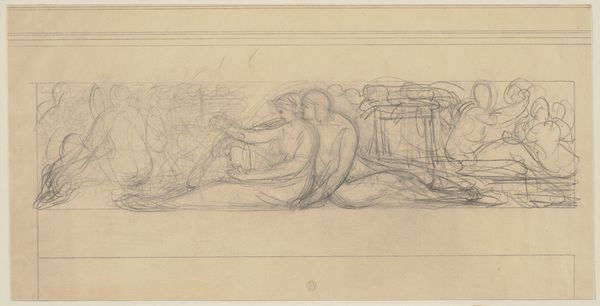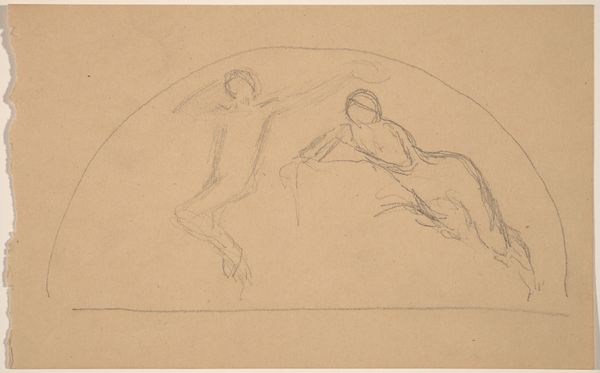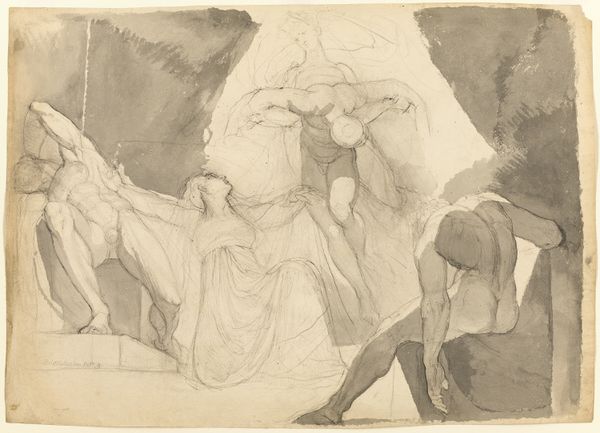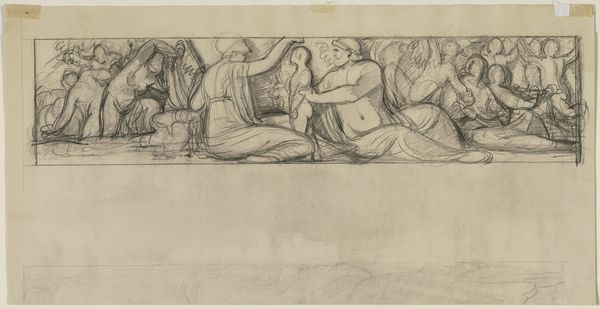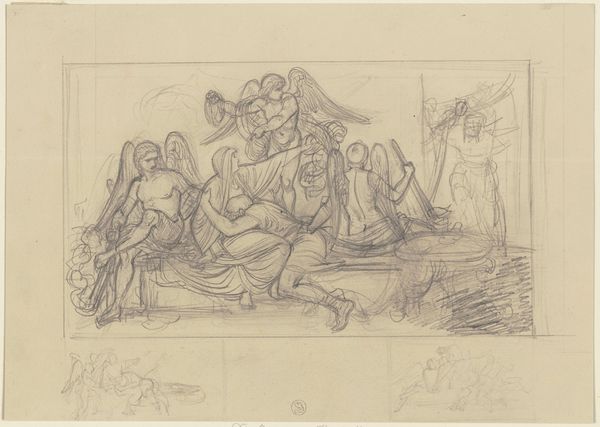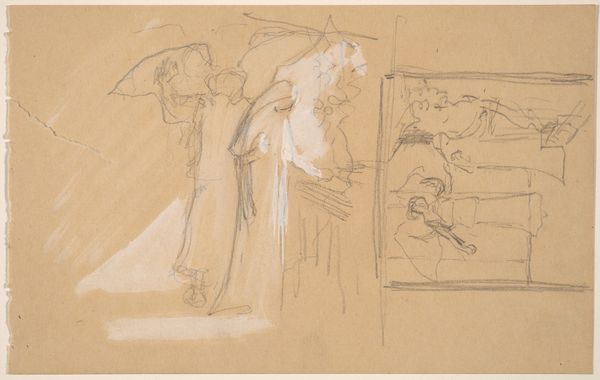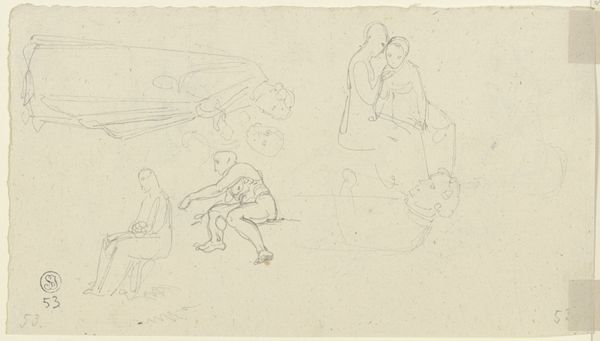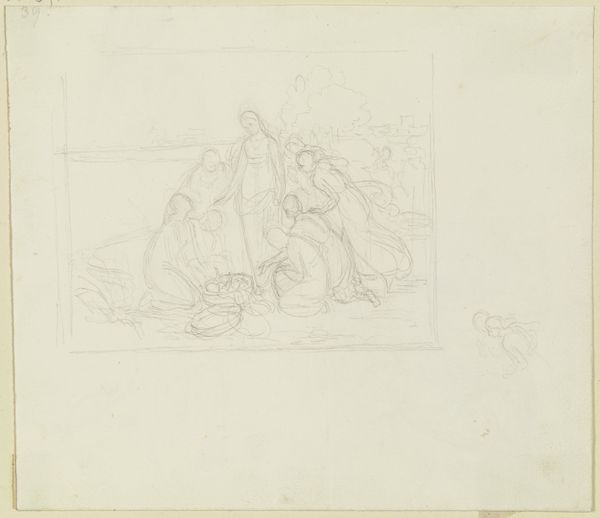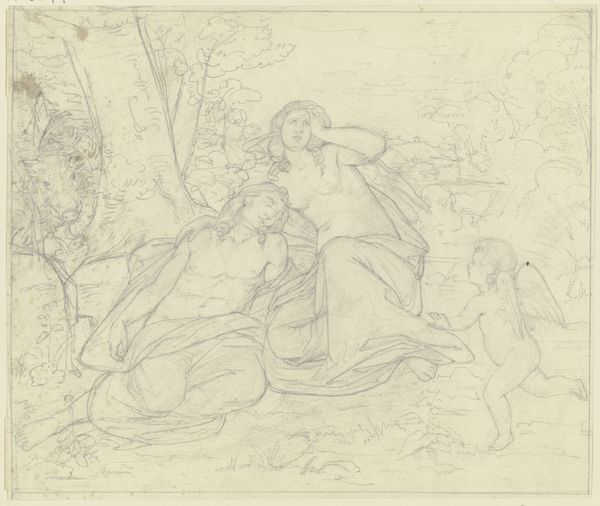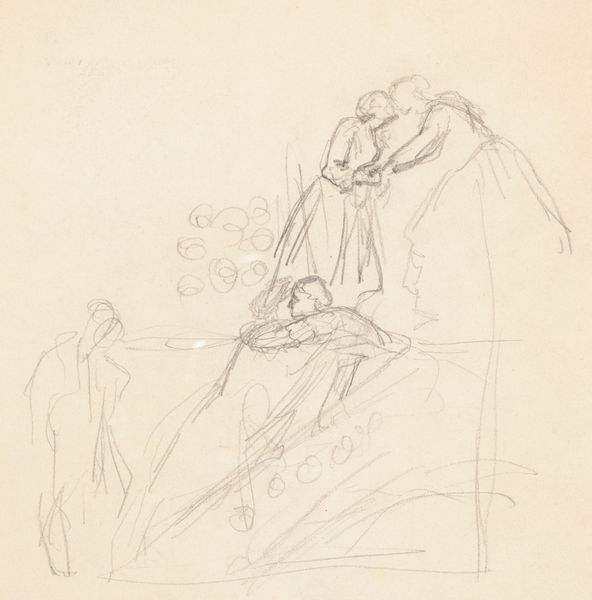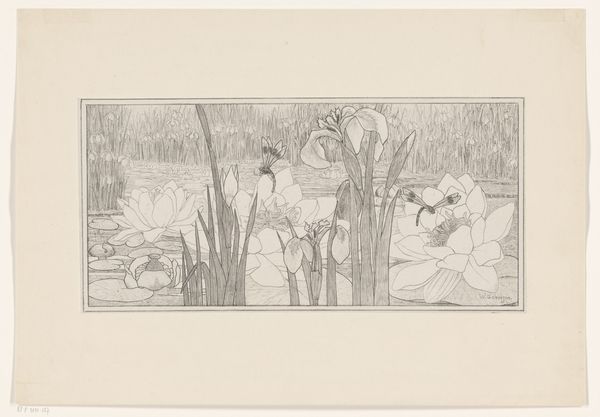
drawing, pencil
#
portrait
#
drawing
#
ink drawing
#
pen sketch
#
pencil sketch
#
figuration
#
pencil
#
genre-painting
#
academic-art
#
nude
Dimensions: sheet: 11.6 × 18.9 cm (4 9/16 × 7 7/16 in.)
Copyright: National Gallery of Art: CC0 1.0
Editor: This is Charles Sprague Pearce’s "Study for a Lunette," created between 1890 and 1897, rendered in pencil and ink. I’m immediately drawn to the contrast between the more defined figure on the left and the sketchier, almost spectral figures to the right. What do you observe in this composition? Curator: Formally speaking, observe how the lunette shape dictates the composition, confining the figures within its arch. Notice the contrasting textures: the smoother rendering of the reclining figure versus the rapidly sketched forms surrounding her. The linework varies dramatically; in places, it is almost frenetic, generating a vibrant tension against the repose of the main figure. Consider how the semi-circular structure emphasizes the spatial relationships. What sort of symbolism do you believe is conveyed in this piece? Editor: Symbolism… I suppose the contrast suggests opposing ideas, like presence and absence, or maybe the fleeting nature of artistic inspiration. Curator: Precisely. The reclining figure, a solid presence, could signify a moment of contemplation or perhaps even a muse. In contrast, the fleeting sketches embody ideas still forming. Furthermore, consider the academic context. Are we seeing a deconstruction or an upholding of academic ideals in this work? Editor: I see what you mean. Maybe Pearce is questioning traditional form, playing with the solidity and impermanence of representation. The sharp distinction makes the static figure appear even more still. Curator: Exactly. By analyzing the inherent visual relationships, and material qualities of "Study for a Lunette," we begin to perceive beyond its face-value representation, revealing a conceptual exploration of form and idea itself. How has your impression shifted through our discussion? Editor: I initially saw a simple sketch, but now I see a dynamic interplay of textures, lines, and form—a deeper reflection on artistic creation itself. Thanks for helping me unpack that!
Comments
No comments
Be the first to comment and join the conversation on the ultimate creative platform.
